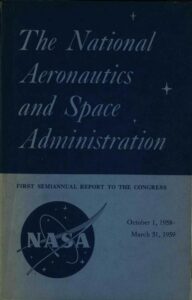To the Moon and Beyond

In 1903, Orville and Wilbur Wright made the first sustained flights by a powered aircraft. Just sixty-six years later, Neil Armstrong walked on the moon. Five decades after Armstrong’s historic walk, NASA has once again turned its attention to the moon with the Artemis program. Although the Artemis I launch has been postponed, this is still a good time to reflect on Ohio’s contributions to aerospace innovation and space exploration.

Twenty-five NASA astronauts have called Ohio home, and three of the first sixteen astronauts were Ohioans. Some of their notable achievements are listed below:
- John Glenn was the first American to orbit the Earth (1962). His second spaceflight took place in 1998, when then-Senator Glenn became the oldest person to orbit Earth at age 77. (Although William Shatner reached space at age 90 in 2021, Glenn remains the oldest person to reach Earth orbit.)
- Neil Armstrong was the first person to set foot on the moon (1969).
- Michael L. Gernhardt executed the first U.S. space walk from the International Space Station in 2001. (Gernhardt is also a professional deep-sea diver with more than 700 dives to his credit.)
- Michael T. Good completed two of the ten longest spacewalks in U.S. history.
- James A. Lovell Jr. was the first NASA astronaut to fly four times and the first person to fly to the moon twice. His second trip, on Apollo 13, made an emergency return to Earth after one of the module’s oxygen tanks exploded.
- Judith Resnick was the second American woman in space. She died when the Space Shuttle Challenger exploded shortly after liftoff in 1986.
- Sunita Williams holds the record for longest total spacewalk time by a woman, with seven spacewalks totaling 50 hours and 40 minutes. She has also spent more days in space (322) than any other Ohioan.

Ohio’s contributions to space exploration aren’t limited to astronauts. Toledo native Gene Kranz served as NASA’s second Chief Flight Director. After the Apollo 13 module experienced an oxygen tank explosion, Kranz led the efforts of the Mission Control team to safely recover James Lovell and the two other astronauts aboard.
Ohio continues to play in important role in training the next generation of astronauts and testing the equipment that carries them into space. Scientists at NASA’s John H. Glenn Research Center in Cleveland began researching jet propulsion in the 1940s and carried that knowledge forward into the Space Race of the 1950s and 1960s. Today, the research center’s In-Space Propulsion Facility and Space Environments Complex provide sophisticated testing that helps engineers learn how equipment holds up to the rigors of launch and spaceflight.

The Air Force Research Laboratory at Dayton’s Wright-Patterson Air Force Base houses altitude chambers and a human-rated centrifuge–just some of the testing facilities that help scientists learn how weightlessness, acceleration, altitude, and other factors affect astronauts and pilots. Wright-Patterson has a long history with the space program: some of the testing for the Mercury 7 astronauts was conducted at the Wright Aerospace Medical Laboratory.
Ohio is also home to more than 500 private aviation and aerospace companies, and the state’s colleges and universities graduate more than 13,000 engineers every year.
When Artemis 1 launches, it will gather information that paves the way for a crewed orbit of the moon (Artemis 2), a crewed lunar landing (Artemis 3), and eventually, robotic and crewed missions to Mars. And as we have in the past, Ohioans will help make it happen.
Thank you to Stephanie Michaels, Research and Catalog Services Librarian at the State Library of Ohio, for this week’s post!



Leave a Reply
You must be logged in to post a comment.